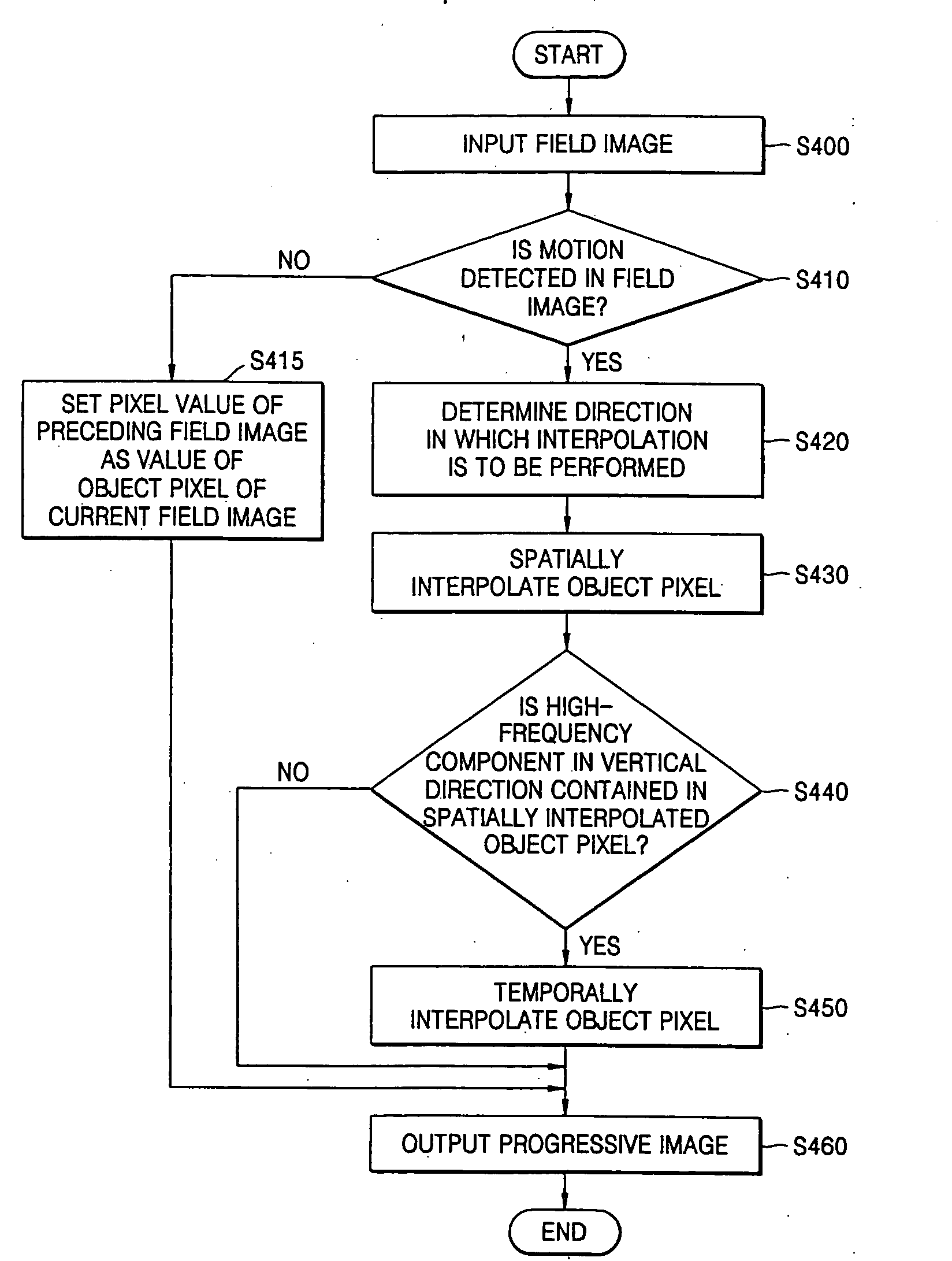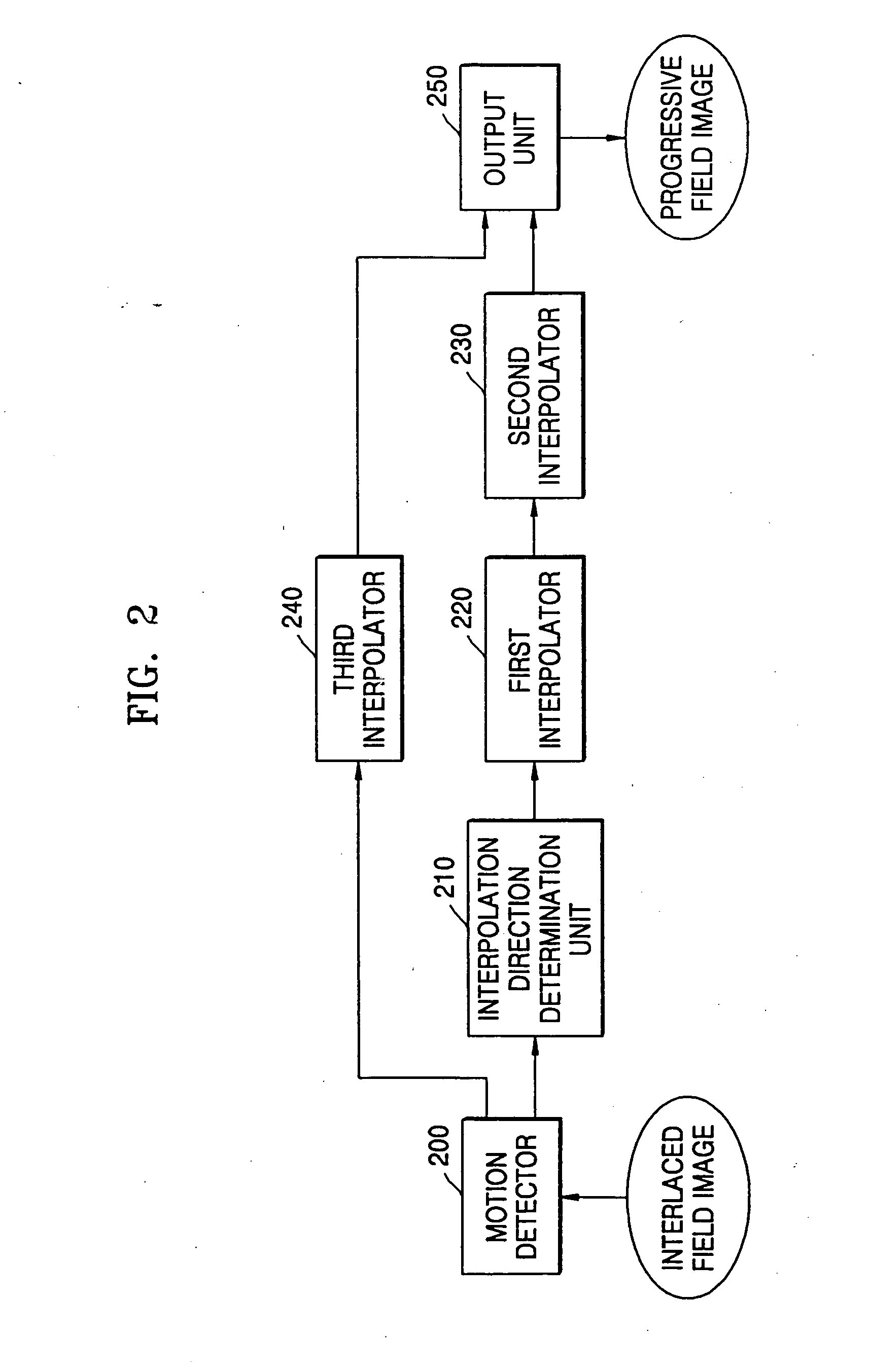Apparatus and method for converting interlaced image into progressive image
- Summary
- Abstract
- Description
- Claims
- Application Information
AI Technical Summary
Benefits of technology
Problems solved by technology
Method used
Image
Examples
Embodiment Construction
[0038] Reference will now be made in detail to the embodiments of the present invention, examples of which are illustrated in the accompanying drawings, wherein like reference numerals refer to the like elements throughout. The embodiments are described below to explain the present invention by referring to the figures.
[0039]FIG. 2 is a block diagram of an apparatus for converting an interlaced image into a progressive image according to an embodiment of the present invention. The apparatus includes motion detector 200, an interpolation direction determination unit 210, a first interpolator 220, a second interpolator 230, a third interpolator 240, and an output unit 250.
[0040]FIG. 3 is a detailed block diagram of the interpolation direction determination unit 210 of FIG. 2. Referring to FIG. 3, the interpolation direction determination unit 210 includes a vertical differential value calculator 310, a first differential value calculator 320, a second differential value calculator 3...
PUM
 Login to View More
Login to View More Abstract
Description
Claims
Application Information
 Login to View More
Login to View More - R&D
- Intellectual Property
- Life Sciences
- Materials
- Tech Scout
- Unparalleled Data Quality
- Higher Quality Content
- 60% Fewer Hallucinations
Browse by: Latest US Patents, China's latest patents, Technical Efficacy Thesaurus, Application Domain, Technology Topic, Popular Technical Reports.
© 2025 PatSnap. All rights reserved.Legal|Privacy policy|Modern Slavery Act Transparency Statement|Sitemap|About US| Contact US: help@patsnap.com



